The lobster festivals in Belize offer a fascinating blend of cultural heritage and lively coastal celebrations. By participating in these vibrant festivals held in Caye Caulker, San Pedro, or Placencia, you immerse yourself in a long-standing tradition that has flourished for decades. Each festival emphasizes sustainable fishing practices, which are vital for protecting Belize’s precious marine resources while enhancing the livelihoods of local communities. From time-honored grilling methods to creative culinary advancements, these festivals provide a fantastic chance to savor fresh, locally-caught spiny lobster, which plays a crucial role in supporting the economic health of coastal towns. Your participation not only enriches your culinary adventure but also contributes to the preservation of Belize’s rich cultural heritage and its delicate marine ecosystems.
Immerse Yourself in the Excitement of Belize’s Lobster Festivals
The Belize lobster festivals represent more than just celebrations; they are a cultural extravaganza that unites seafood gastronomy with community traditions. These dynamic events radiate the warmth of Belizean hospitality while underscoring the necessity of sustainable fishing practices. With more than 15,000 enthusiastic attendees each year across various locations, these festivals have become a vital highlight of Belize’s cultural calendar, showcasing the rich traditions and flavors of the region.
Discover Unique Festival Experiences Across Belize
- Caye Caulker Lobster Fest – A vibrant celebration occurring every July
- San Pedro Lobster Festival – A two-week culinary festivity brimming with flavor
- Placencia Lobster Fest – A festive gathering along the beautiful beachfront
| Festival Location | Unique Features |
|---|---|
| Caye Caulker | Interactive traditional cooking demonstrations |
| San Pedro | Exciting lobster crawl activities |
| Placencia | Joyful beach parties filled with music |
| Duration | 2 to 14 days of festive celebrations |
| Peak Season | July to August, attracting visitors from far and wide |
Tracing the Growth of Belize’s Lobster Festival Tradition
The origin of the Belize lobster festivals signifies an important chapter in the nation’s cultural history, starting in 1994 with the first Caye Caulker Lobster Festival, which began as a small fundraising effort.
Over the years, these lobster festivals have evolved from modest community gatherings into major attractions for tourists. At present, the celebrations boast thrilling culinary competitions, energetic beach parties, and educational sustainable fishing demonstrations, firmly establishing these festivals as integral to both the local economy and Belize’s vibrant cultural identity.
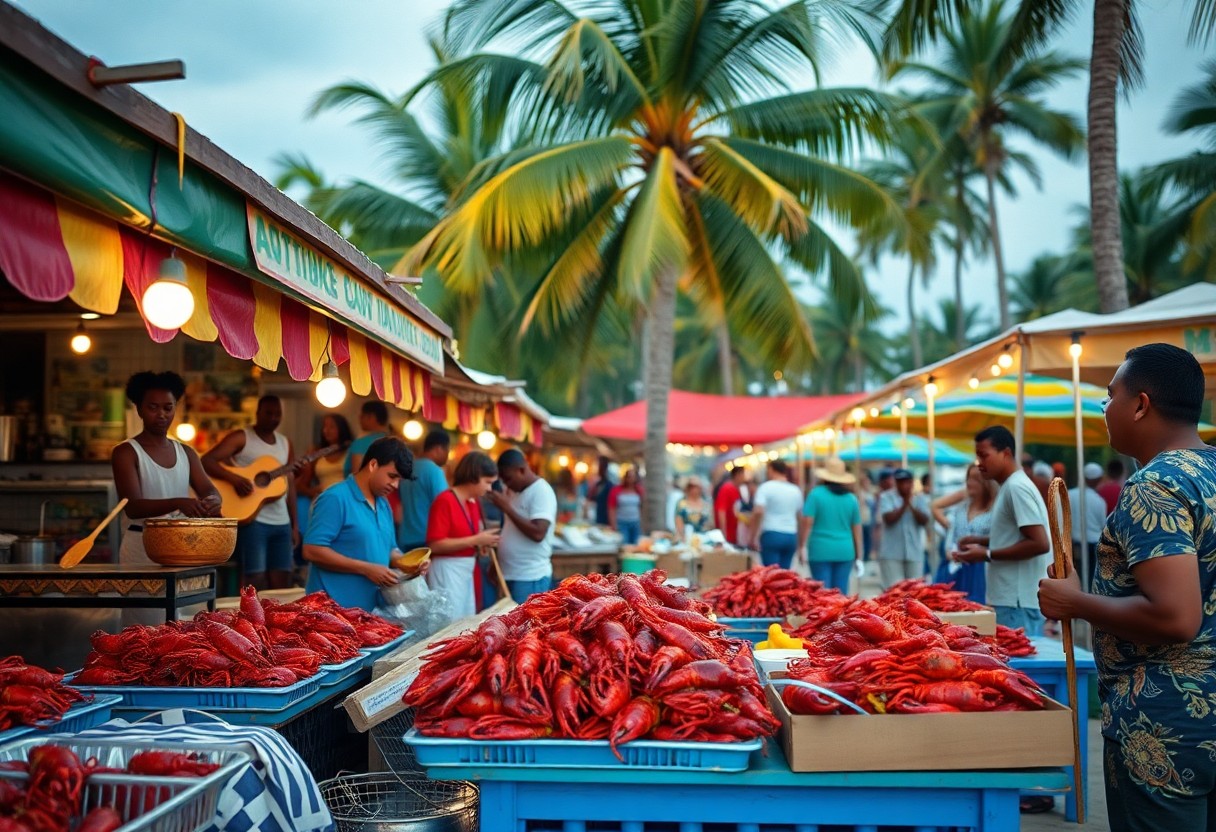
Highlighting the Importance of Sustainable Fishing Practices in Belize
Your understanding of Belize’s lobster industry will deepen as you uncover the unwavering commitment to sustainable fishing practices upheld by local communities. These fishing families endeavor to balance the excitement of the festivals with the imperative to protect essential marine resources. Local fishers comply with strict size and weight regulations, ensuring only mature lobsters are harvested. This includes maintaining a minimum tail weight of 4 ounces and a carapace length of 3 inches, both crucial for the sustainability of the lobster population.
Comprehending Fishing Regulations and Guidelines
The fishing practices in Belize are governed by clear seasonal restrictions designed to safeguard lobster populations. The fishing season spans from July 1 to February 28, allowing lobsters to reproduce during the closed-off period. The Belize Fisheries Department plays a critical role in enforcing these regulations through consistent monitoring and imposing severe penalties for violations. By participating in these festivals, you actively support vital conservation initiatives aimed at preserving the marine ecosystem.
Diving Into Traditional Fishing Techniques
As you explore Belize’s rich fishing heritage, you’ll discover that local fishers employ three primary techniques: lobster traps, diving with hooks, and lobster shades. These methods have been honed over generations to minimize environmental impact while maximizing harvest efficiency.
For instance, lobster shades – sustainable artificial shelters – provide secure habitats for lobsters, enhancing harvest effectiveness. These structures can remain submerged for 2-3 years, unlike traditional traps, which must be removed during the closed season. Gaining insight into these methods fosters a greater appreciation for the preservation of fishing culture and marine ecosystems.
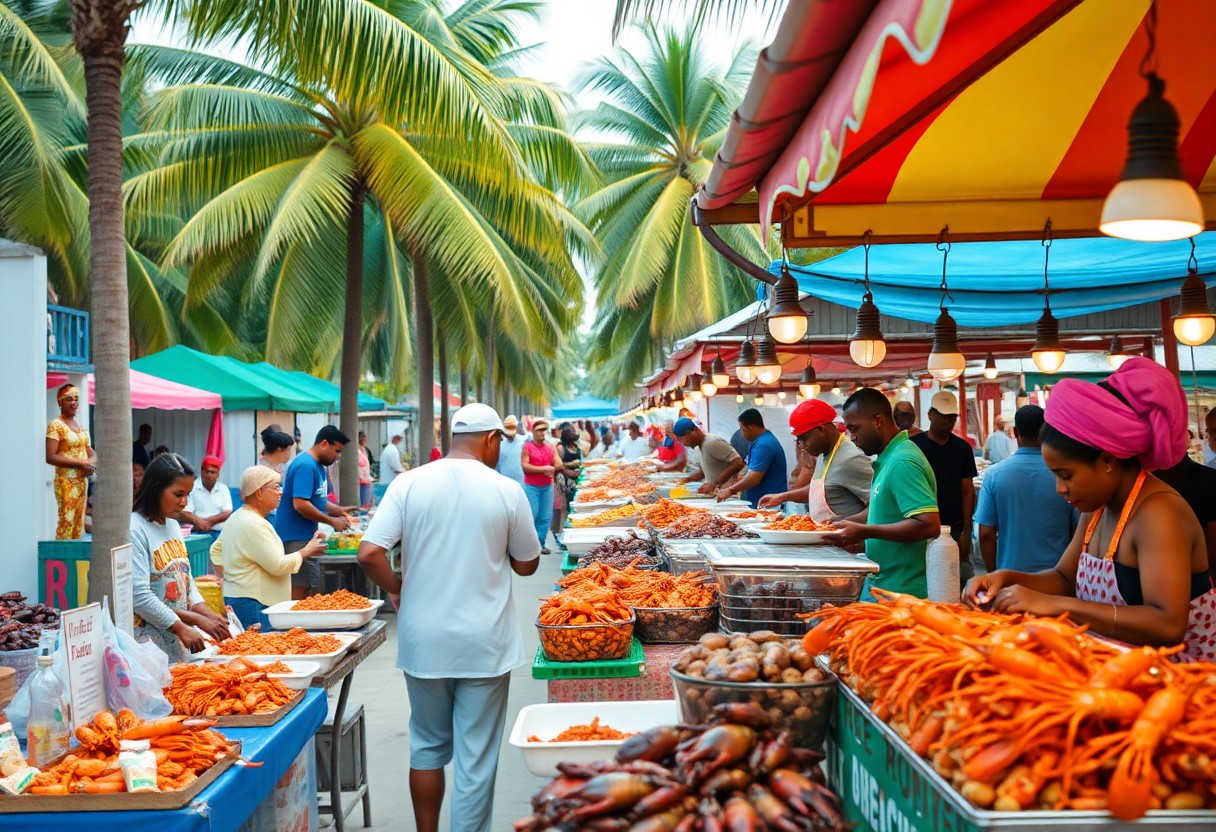
Strategically Planning an Unforgettable Lobster Festival
While the excitement of organizing a lobster festival is palpable, having a comprehensive plan is crucial for ensuring its success.
- Selecting a suitable venue that can accommodate the anticipated crowd size is essential
- Securing permits and licenses in advance is necessary to avoid any delays
- Coordinating with local vendors demands careful planning and effective communication
- Implementing safety measures that comply with health regulations is critical
It’s advisable to allocate a minimum of 3-4 months for thorough preparation to ensure a smooth and enjoyable event.
Key Considerations for Effective Event Planning
Successfully organizing your festival involves paying attention to specific details that contribute to a seamless experience.
- Weather-related considerations during the July-August season can significantly affect attendance
- Having an emergency response team available is essential for ensuring safety
- Establishing waste management systems is necessary for maintaining cleanliness
- Crowd control measures must be implemented to guarantee attendee safety
Once these foundational elements are secured, you can focus on scheduling entertainment and exciting activities.
Ensuring Culinary Excellence and Safety at Your Festival
To guarantee the highest food quality at your festival, it’s essential to maintain proper storage temperatures for lobsters. Vendors must possess food handling certifications and strictly comply with local health guidelines. Each booth should be equipped with adequate refrigeration and sanitation stations to ensure the safety of the food being served.
Moreover, it is crucial to uphold food safety standards throughout the event. Establishing clear guidelines for portion control and cooking methods is vital. Vendors need to maintain accurate records of their lobster sourcing to comply with Belize’s fishing regulations, which stipulate a minimum tail weight of 4 ounces.
Fueling Economic Development Through Lobster Festivals
Many coastal communities in Belize have experienced remarkable economic growth thanks to the lobster festivals. These events generate over $2 million annually in tourism revenue, facilitating job creation and boosting local businesses. Your attendance at these festivals directly contributes to the sustainable fishing industry and aids in the preservation of traditional fishing practices.
Transformative Impact on Local Communities
Even the tiniest fishing villages have evolved into thriving tourist destinations during festival seasons. You’ll encounter local families managing food stalls, craft vendors offering unique handmade souvenirs, and fishermen proudly showcasing their fresh catch. The festivals create direct income opportunities for more than 500 local families while supporting essential marine conservation initiatives.
Key Drivers of Growth in the Lobster Festival Industry
A thorough examination of Belize’s lobster festival industry reveals several significant growth drivers:
- Sustainable fishing practices that protect marine ecosystems
- International tourism promotion that attracts visitors from around the globe
- Local culinary innovation that enhances the festival experience
- Community participation that fosters inclusivity and engagement
This collective impact has resulted in an impressive 15% annual growth in festival attendance, underscoring the significance of these events.
It’s essential to recognize that the success of these festivals relies on:
- Strict adherence to fishing regulations that ensure sustainability
- Quality control measures that maintain high standards of food safety
- Environmental protection initiatives that safeguard ecosystems
- Robust tourism infrastructure that enhances visitor experiences
This sustainable approach promises enduring economic benefits for local communities and the environment.
Dedication to Conservation Initiatives in Belize
The preservation of Belize’s spiny lobster population is of utmost importance, leading to the establishment of strict fishing regulations and seasonal restrictions. These proactive measures have effectively maintained healthy lobster populations while supporting local fishing communities. The closed season from March 1 to June 30 is critical for successful breeding and population recovery.
Proactive Environmental Conservation Measures
Even the smallest actions can lead to significant impacts in lobster conservation. Local fishers employ sustainable fishing techniques such as lobster shades and regulated traps to reduce their environmental footprint. The minimum catch size of 4 ounces and a 3-inch carapace length ensures that juvenile lobsters have the opportunity to mature and reproduce before being harvested.
Empowering Community Education Efforts
Your interest in local conservation efforts will be rewarded as you learn how Belize’s fishing communities pass down traditional sustainable fishing practices to younger generations. Local organizations often conduct workshops that emphasize responsible fishing methods and the importance of adhering to regulations.
Furthermore, your engagement in these festivals directly supports educational initiatives. The festivals serve as interactive platforms where you can connect with local fishers and learn about marine conservation. These events help fund educational programs that inform both children and visitors about the significance of sustainable fishing practices.
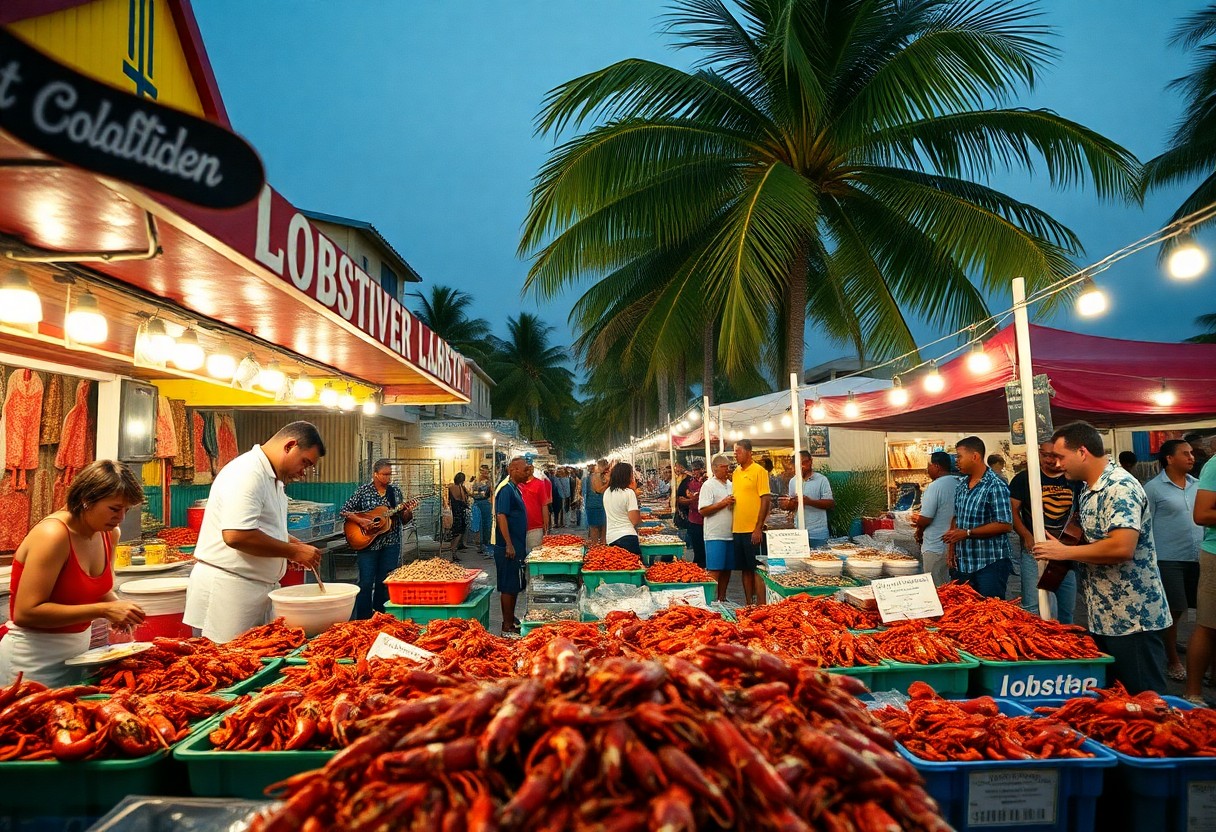
Maximizing Your Enjoyment at the Lobster Festivals
Once you decide to attend a Belize Lobster Festival, it’s essential to familiarize yourself with the safety guidelines and local regulations. Adhering to these best practices will not only enhance your festival experience but also promote sustainability and ensure the safety of all attendees during the celebrations.
Critical Vendor Guidelines for Festival Success
If you’re considering selling your products at the festival, it is crucial to obtain the proper permits from local authorities. Your booth must comply with food safety standards, sourcing lobsters exclusively from licensed fishermen. Verification that all lobsters meet the minimum size requirements of 4 ounces and 3 inches carapace length is mandatory.
Visitor Recommendations for an Enjoyable Festival Experience
When attending the festival, it’s wise to arrive early to enjoy the best selection of lobster dishes available. Your overall experience will be enhanced by bringing cash, wearing comfortable shoes, and applying sun protection. Before making any purchases, ensure you check the food preparation standards.
Participating in festival activities requires attentiveness to safety protocols. You can enrich your experience by sampling a variety of vendor offerings, joining in local dance celebrations, and supporting sustainable fishing methods. Festivals typically run from morning until late evening, with peak crowds occurring between 12 PM and 4 PM.
Experience the Heart and Soul of Belize Lobster Festivals
Through your exploration of Belize Lobster Festivals, you can truly appreciate how these events weave together cultural celebration and sustainable practices. Visiting any of these festivals – whether in Caye Caulker, San Pedro, or Placencia – offers you a unique opportunity to indulge in the authentic flavors of Belize while supporting local communities. Witness firsthand how fishers adhere to stringent guidelines for lobster conservation, chefs create exquisite dishes, and locals share their rich heritage. These festivals epitomize Belize’s commitment to harmonizing tourism growth with environmental responsibility, positioning them as a model for sustainable food festivals globally.
Your Questions Answered: Frequently Asked Questions
Q: When and where can I experience the Lobster Festivals in Belize?
A: The Lobster Festivals commence at the start of the lobster season on July 1st. The primary venues for these festivities are Caye Caulker (since 1994), Placencia (since 1998), and San Pedro (since 2007). The San Pedro festival spans two weeks, while Caye Caulker and Placencia host weekend-long celebrations, drawing visitors from near and far.
Q: What measures does Belize implement to ensure sustainable lobster fishing practices during the festivals?
A: The Belize Fisheries Department enforces rigorous regulations: lobsters must weigh a minimum of 4 ounces and have a carapace length of at least 3 inches. The fishing season lasts from July 1 to February 28. Fishers utilize sustainable methods such as lobster shades and traps, which must be removed during the closed season. Licensed fishers strictly adhere to these regulations to protect lobster populations for future generations.
Q: How do the Lobster Festivals economically benefit local communities?
A: The festivals create substantial income opportunities for local fishers, restaurant owners, and businesses during the tourism off-season. Restaurants actively participate in events like the lobster crawl, showcasing special lobster dishes. Attracting thousands of visitors, these festivals bolster the local economy through food sales, accommodations, and tourism-related activities. The events provide fishing families with a reliable source of income while promoting sustainable fishing practices that benefit the broader community.
The Article Belize Lobster Festivals: A Celebration of History, Sustainability, and Prosperity appeared first on Belize Travel Guide
The Article Belize Lobster Festivals: Celebrating Sustainability and Culture Was Found On https://limitsofstrategy.com
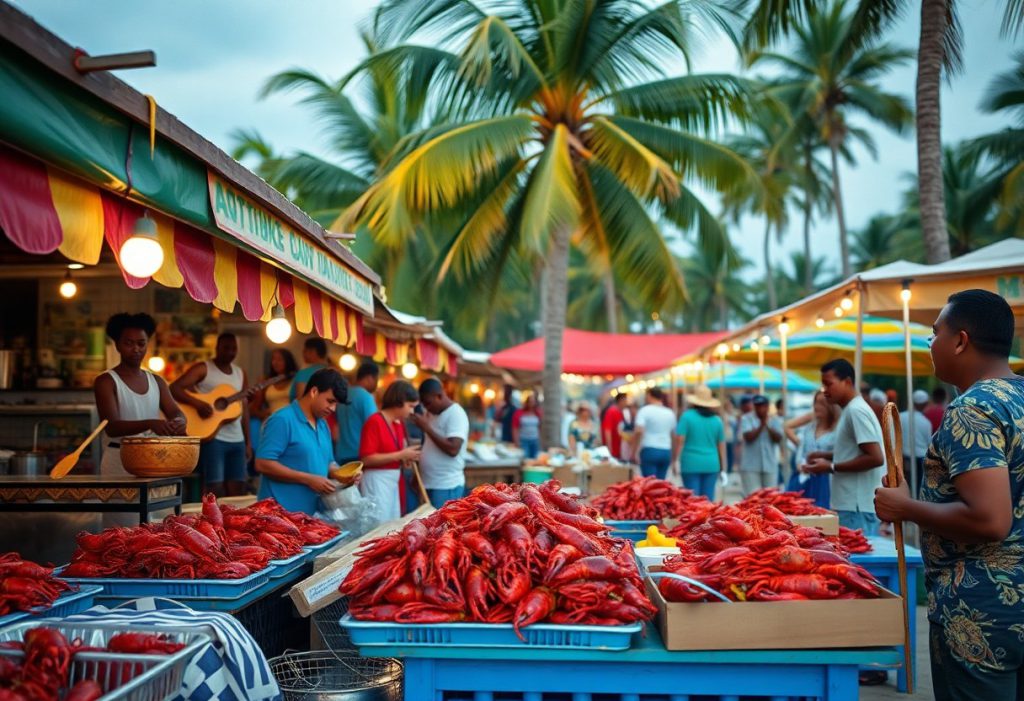
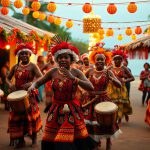

It’s so exciting to read about the lobster festivals in Belize! I’ve always been fascinated by how food can bring communities together while celebrating local traditions. The emphasis on sustainable fishing practices resonates with me, especially as awareness grows around marine conservation globally.
You’re touching on something really essential with the connection between food and community. It’s fascinating how these lobster festivals not only highlight delicious dishes but also foster a sense of belonging and shared culture among locals.
Your exploration of the Belize lobster festivals truly captures the essence of cultural richness and community spirit that defines these celebrations. Having attended a few regional festivals myself, I can wholeheartedly attest to the vibrancy and warmth that resonates through each event. There’s something inherently special about gathering with locals and visitors alike, sharing stories and laughter over freshly grilled spiny lobster, knowing that every bite supports both the economy and the ongoing efforts for sustainable fishing practices.
You really highlight a key aspect of the Belize lobster festivals—the sense of community that brings everyone together. It’s fascinating how these events serve as more than just a celebration of delicious food. They foster connections among not just locals, but also visitors who come from far and wide to experience the traditions of Belizean culture. I’ve seen firsthand how sharing a meal can break down barriers, creating an atmosphere where stories exchange easily, and laughter fills the air.